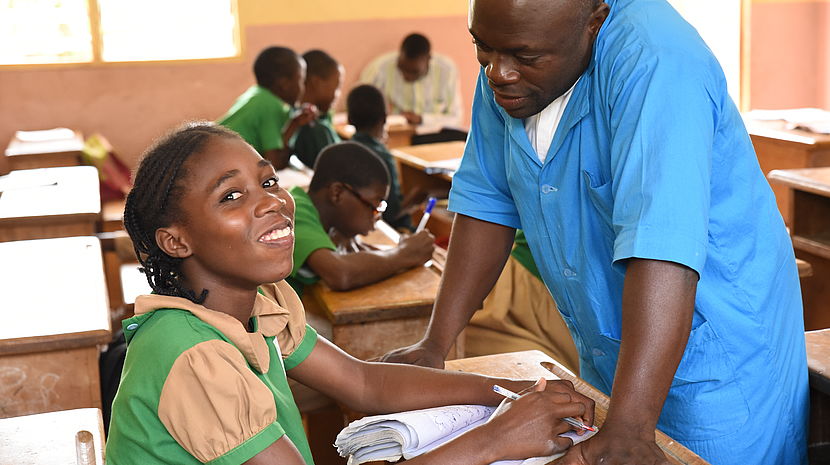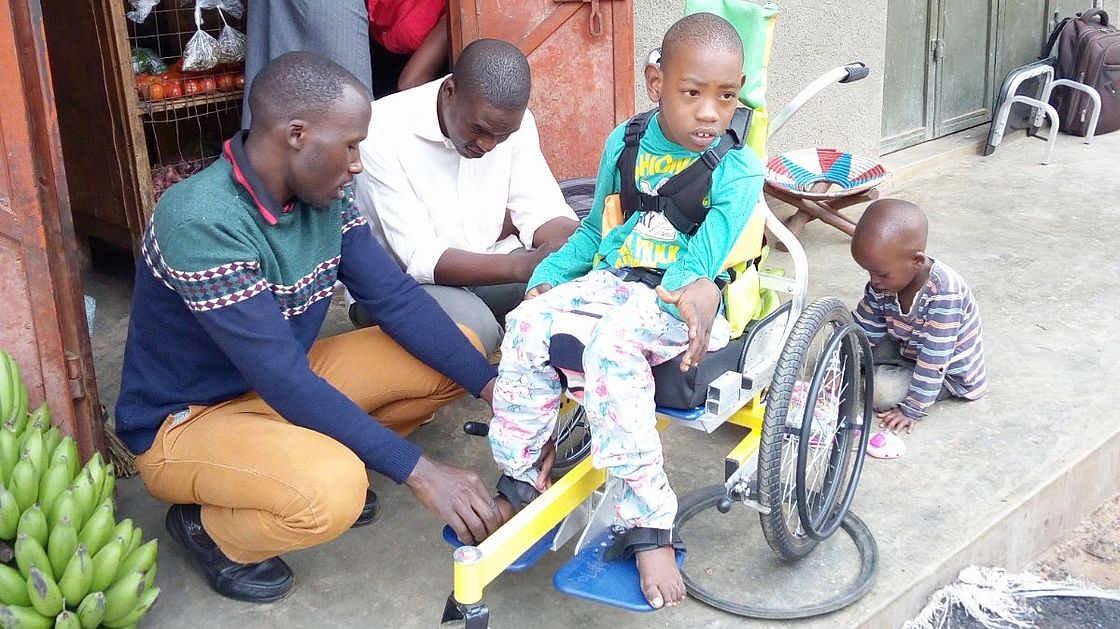Raising Awareness and Improving the Lives of Persons with Cerebral Palsy
World Cerebral Palsy Day 2019

Matsiabo Channelle (15) in class with her teacher Mr. Metomo at the PROMHANDICAM inclusive school in Yaounde, Cameroon. Matsiabo was born with cerebral palsy. She also receives physiotherapy and rehabilitation from the PROMHANDICAM medical centre. ©CBM
©CBM
World Cerebral Palsy Day, celebrated every year on October 6th, not only raises awareness of the most common physical disability affecting children, but reminds us that we have a duty as a society to protect their human rights and help them live fulfilling lives, just like everyone else.
What cerebral palsy is (and is not)
Cerebral palsy is a condition, NOT a disease, that affects the development of controlling muscles, movement and body posture. It is the result of damage to the parts of the brain that control movement. This permanent disability can range from a weakness in one hand, to almost a complete lack of voluntary movement. For most persons, the cause is unknown.
This makes it difficult for children to achieve developmental milestones, such as rolling, sitting, standing, walking, using both hands, talking and feeding, among others. Some persons with cerebral palsy may experience seizures, changes in behaviors and sleeping. All these features contribute to limitations while engaging in age-appropriate activities.
A global snapshot of cerebral palsy
More than 17 million people globally are living with this permanent disability. Another 350 million family members and caregivers are closely connected to a child or adult with cerebral palsy. It is the most common physical disability in childhood.
As a lifelong condition, children with cerebral palsy need long-term rehabilitation or multidisciplinary interventions to train and retrain lost functional skills, prevent secondary disabilities and participate in daily life activities. Rehabilitation and multidisciplinary interventions can thus improve the quality of life for children, their parents or caretakers, their families and communities.
However, this process is hampered by limited resources and high costs required to meet the needs of these children and their families, usually in terms of transport fares, medical or rehabilitation costs, assistive devices and reviews while visiting the service providers as per agreed rehabilitation plans.
Sadly, in many communities around the globe, social stigma leaves many persons with cerebral palsy uneducated and hidden away from the rest of the community.
CBM partner OURS makes a difference
To address these challenges, CBM partner OURS in Uganda, through community-based inclusive development strategies, started employing home-based rehabilitation for children with cerebral palsy. During home visit follow-ups, caretakers and parents are coached and trained in their homes on the appropriate approaches and interventions to maintain and improve the function and participation of children in their daily lives, while using locally available resources.
Thanks to this programme, children living with cerebral palsy and their caregivers report positive change and improved wellbeing.
Kabuye Daniel is a child living with cerebral palsy. With his wheelchair he can play with his siblings and go places more easily.
This has improved life for Daniel and his father, who says, “It’s now easier for me—and [I] feel somehow relieved—as I no longer have to lift him. He can now easily play with siblings while in the wheelchair, and it’s easy for me to take him to church. Even the minor repairs [to the wheelchair] can be done from our home.”

The father (white shirt) of Kabuye Daniel learns how to adjust the footrest of his son’s wheelchair, thanks to the OURS programme. ©OURS
©OURSSo, what can you do?
This year, to observe World Cerebral Palsy Day, you can support programmes, like OURS, that improve the lives of children living with cerebral palsy through a donation.
Alternatively, you can visit your nearest children’s cerebral palsy rehabilitation centre.
If you have cerebral palsy yourself (or you’re a parent, caregiver or friend of someone with cerebral palsy), you can share your story with others.
If you want to create awareness in your own neighborhood, you can attend a discussion on cerebral palsy.
Or, if you have a child or know a child with cerebral palsy, you can throw a party or set up a play date to remember because children need to know love.